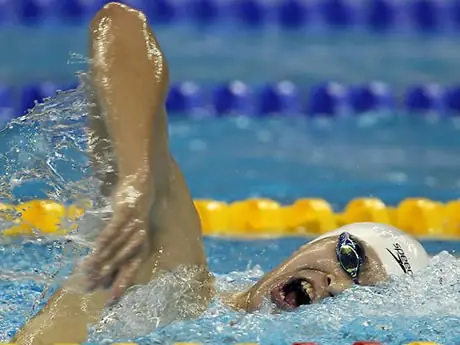
The first leg of an Olympic-distance triathlon is a 1500M (0.9mi) swim. This thrashing, white-water, washing machine start is often the most intimidating and off-putting leg of any triathlon. On the bike you can put your foot down; on the run you can rest; but on the swim, you have to swim.
The saying about a triathlon swim is that you can't win a race there, but you can lose one. Let the lead pack get too far away, burn too much energy fighting the water, or simply get caught in a bad starting position, and the leaders are out of T1 before your feet hit sand.
So, how can you have a good, fast 1.5K swim? Before we really get into technique it should be noted that any technique work needs to be done slowly. It will not work if you are swimming fast. Changes should be done with a long-term mindset. Don't worry if your times rise; that isn't the point at the start. Times will fall again as you become more comfortable with the stroke.
More: 10 Elements of a Perfect Freestyle Stroke
This advice works just as well for beginners as it can for experienced triathletes struggling on their swim, a notoriously weak discipline for most strong cyclists and runners. I've included a drill or set with most of the tips to help put the advice to practice. Let's get started.
The keys to a faster 1.5K swim can be summed up in four S's:
- Smooth
- Strong
- Sustainable
- Smart
This column will address the smooth.
Smooth
A good stroke is the most important aspect of swimming fast over distance. That's why smooth comes first. It is also going to be the longest section, as I believe it is the most important. You should do one smooth workout a week. Beginning swimmers should do more like one and a half smooth workouts.
Smooth swimming is fast swimming. The natural reaction of anyone who wants to swim faster is to swim harder. Harder, however, often translates to thrashing, splashing, and gasping. This surely does make it harder to swim, but it is in no way faster. Great amounts of splashing water in every direction mean energy is being expended in futile places instead of being focused back behind the swimmer where it should be. A fast swim is a smooth swim. And a smooth swim is all about good technique.
More: How to Streamline Your Stroke
When you think about good technique you shouldn't think so much about Michael Phelps as you should Sun Yang, the 1500m gold medalist and world record holder from London. This is not to take away from Phelps, he just might be the greatest swimmer in history, but Yang's stroke is very different than that of a 200m swimmer, and much more similar to the stroke of a triathlete.
A smooth stroke comes in four parts:
? Reach? Pull
? Finish
? Recovery
Reach
A triathlete wants to cover as much distance as possible per stroke without sacrificing speed to an overlong glide. To lengthen your stroke you want to reach at the top.
Stand up and raise your hand like a student reluctantly volunteering. Now raise your hand like the kid who knows the answer and needs to be called on. Oh, oh, Mr. Kotter! Feel what your body did? You probably rotated and raise that hand as high into the air as you could. In the water that means rotating your shoulder to your chin and reaching your fingertips towards to opposite wall, the far buoy or the swim exit.
Now you're taller. Now your stroke is 6 to 8 inches longer than it was before you reached. Six to 8 inches more stroke at the front means you are traveling farther per stroke. Traveling farther per stroke means your stroke count drops. A low stroke count means less energy expended in the water, which means more energy you can use to gap the runners on the bike.
- 1
- of
- 3
Get ACTIVE on the Go


Meet Mobile
Swim smarter: heats, lane assignments and real-time results in the palm of your hand.
Available for iOS | Android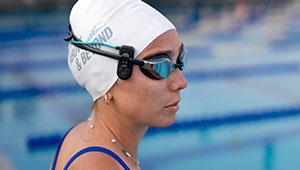
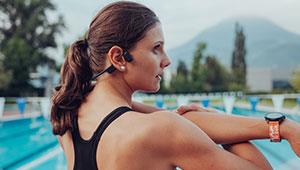
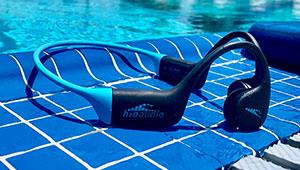

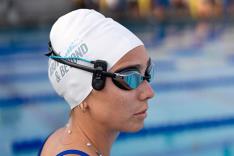

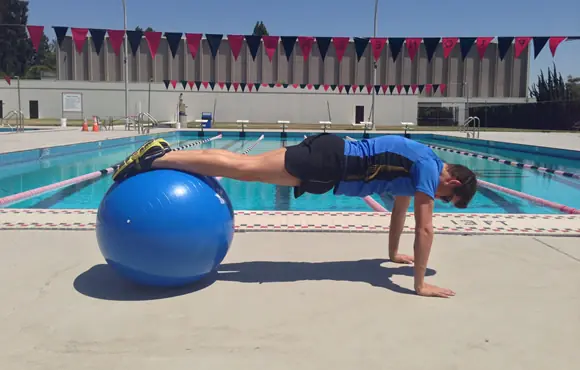

Discuss This Article